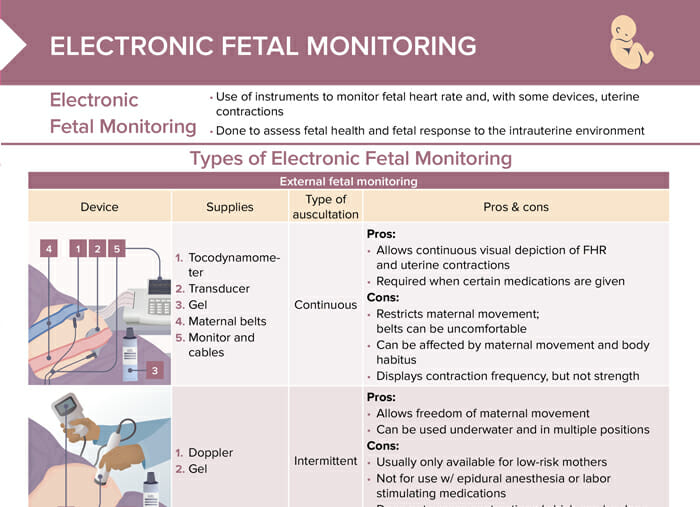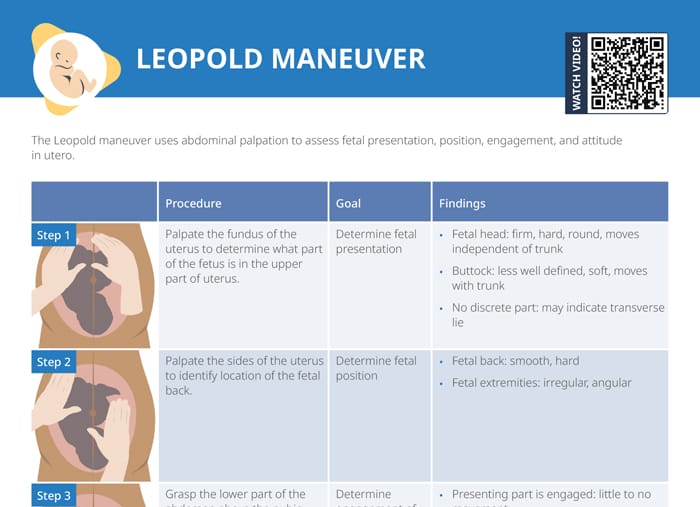What is the Leopold maneuver?
The Leopold maneuvers are a common, non-invasive assessment for pregnant clients. It involves palpating the abdomen using specific hand movements in four steps to gather valuable information about the fetal position, which is essential for safe and effective labor and delivery management.
What is the purpose of the Leopold maneuvers?
The purpose of the Leopold maneuvers is to assess the position, presentation, attitude, and engagement of the fetus inside the uterus:
- Position: whether the fetus is positioned longitudinally, transversely, or obliquely
- Presentation: which part of the fetus is presenting first, such as head or breech
- Engagement: how far the presenting part has descended into the pelvis
- Attitude: relationship of fetal head to body (ideal: fetus curled with back rounded and chin tucked to chest, arms crossed over chest and legs folded at knees)
This information is important for planning the delivery and can guide decisions during labor. Usually, the Leopold maneuvers are done to determine if the fetus is in an optimal position for labor. They are also used to identify the location of the fetal back, which is where fetal heart tones are best auscultated.
Related videos
Leopold maneuvers steps
Maneuver 1: Fundus palpation to determine fetal presentation
Palpate the fundus of the uterus to determine what part of the fetus is in the upper part of the uterus. Findings:
- Fetal head: firm, hard, round, moves independent of trunk
- Buttock: less well defined, soft, moves with trunk
- No discrete part: may indicate transverse lie
Maneuver 2: Palpation of sides to determine fetal position
Palpate the sides of the uterus to identify the location of the fetal back. Findings:
- Fetal back: smooth, hard
- Fetal extremities: irregular, angular
Maneuver 3: Palpation of lower abdomen to determine engagement of presenting part
Grasp the lower part of the abdomen above the pubic symphysis to engage the fetal presenting part. Gently move from side to side. Findings:
- Presenting part is engaged: little to no movement
- Presenting part is not engaged: part is easily moved, ballotable
Maneuver 4: Palpation to determine fetal attitude
Facing the foot of the client, use both hands to assess the position of the fetal head. Findings:
- Fetal head is well flexed: resistance from the brow is palpated opposite the fetal back.
- Fetal head is extended: occiput is palpated on the same side as the fetal back.
Factors that may affect findings
Factors that may affect findings include:
- Maternal body habitus
- Polyhydramnios
- Full maternal bladder

